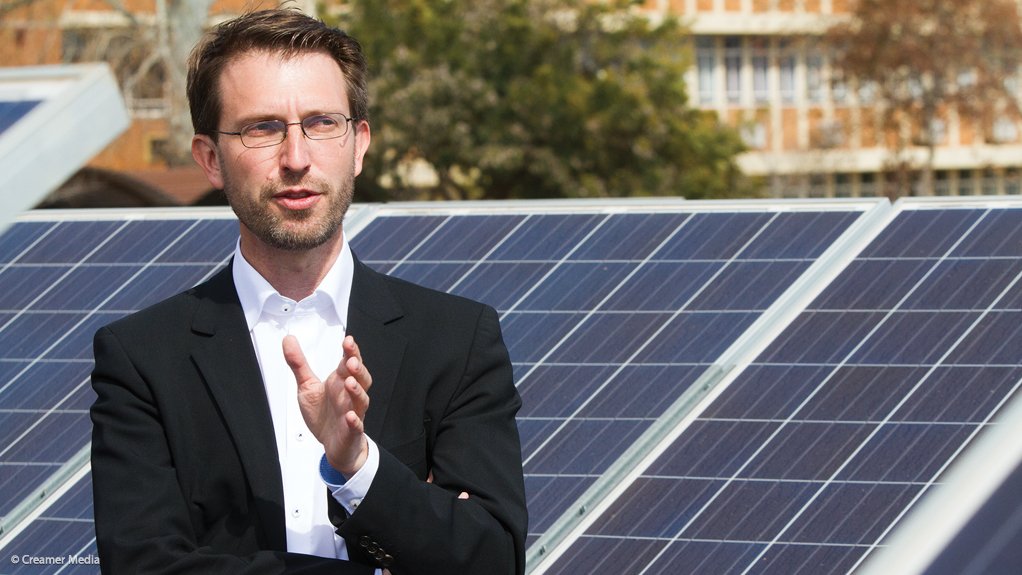- CSIR Energy Centre cost comparison for new electricity generation in South Africa (0.22 MB)
A new comparative analysis of the cost of electricity generated from various supply sources in South Africa shows new solar photovoltaic (PV) and onshore wind to be 40% cheaper than the costs associated with new baseload coal-fired power stations.
The analysis, conducted by Council for Scientific and Industrial Research (CSIR) Energy Centre head Dr Tobias Bischof-Niemz and energy economist Ruan Fourie, is based on information confirmed by the Independent Power Producer (IPP) Office, which oversees the procurement of new private generation capacity on behalf of the Department of Energy and the National Treasury.
The study reports that solar PV and wind prices bid as part of the yet-to-be-announced ‘expedited round’ of the Renewable Energy Independent Power Producer Procurement Programme fell to 62c/kWh from between 69c/kWh and 95c/kWh in the fourth bid window, with all figures normalised to an April 2016 rand.
The tariffs represent a sharp fall from the first competitive auction in 2011, when the contracted price for solar PV project came in at 365c/kWh, while the wind projects signed 20-year power purchase agreements at 151c/kWh.
Bischof-Niemz and Fourie have also made the announced tariffs for the first two coal baseload IPP projects, which were named as preferred bids on October 10, comparable with renewable IPP tariffs. They estimate that the comparable average contracted price arising from the 557.3 MW Thabametsi and the 306 MW Khanyisa coal-fired projects will be 103c/kWh, rather than the sub-82c/kWh prices announced.
The upward adjustment is based on the fact that the bids were submitted in April-2014 rand and, thus, need to be escalated, using the consumer price index (CPI), to an April-2016 rand level. In addition, the qualification tariffs associated with the two projects do not include the so-called “shallow grid connection” costs, which will need to be reflected in the final tariff. The renewables IPP projects, by contrast, include the cost of shallow grid connections. Energy Minister Tina Joemat-Pettersson has indicated that she expects the projects will reach financial close during the first half of 2017.
“We now know from transparent, tariff-based procurement processes what the cost of new solar PV, wind and new coal baseload is. The result is that new solar PV and wind is 40% cheaper than new baseload coal,” Bischof-Niemz and Fourie assert.
They stress, too, that the tariffs are “fully comparable”, as they are based on long-term take-or-pay contracts with the same offtaker, which is Eskom, as well as the same consumer price index inflation-linked escalation.
The latest cost comparison further reinforces a recently published CSIR Energy Centre thought experiment, which argues strongly for a transition to an electricity mix built primarily on solar PV and wind and supported by “flexible” technologies that are able to respond when the sun sets and/or the wind stops blowing.
The model shows that, in combining the 62c/kWh from wind and solar PV, with flexible solutions such as gas, which are “pessimistically” assumed to carry a cost of 200c/kWh, the outcome is a “blended cost” of just 90c/kWh. Such an outcome is cheaper than both baseload coal of 103c/kWh and the 117c/kWh to 130c/kWh currently assumed for nuclear.
Edited by: Creamer Media Reporter
EMAIL THIS ARTICLE SAVE THIS ARTICLE
To subscribe email subscriptions@creamermedia.co.za or click here
To advertise email advertising@creamermedia.co.za or click here













